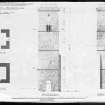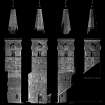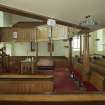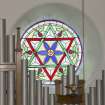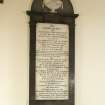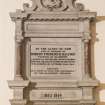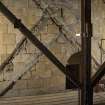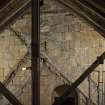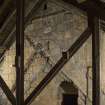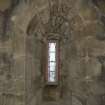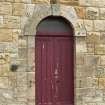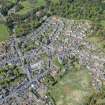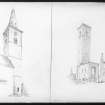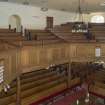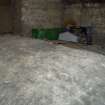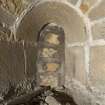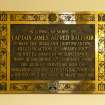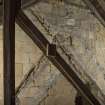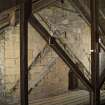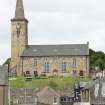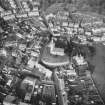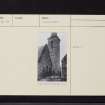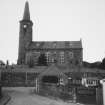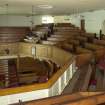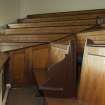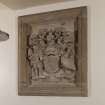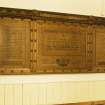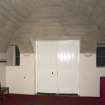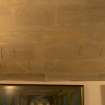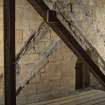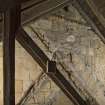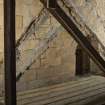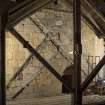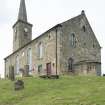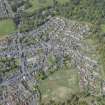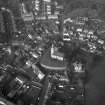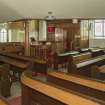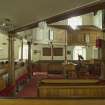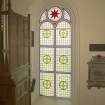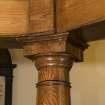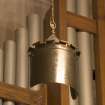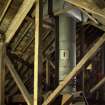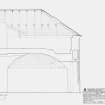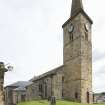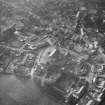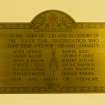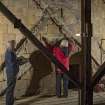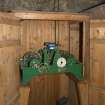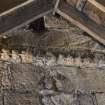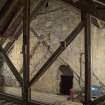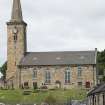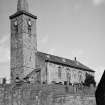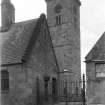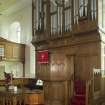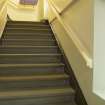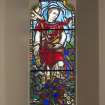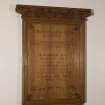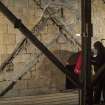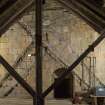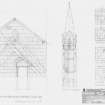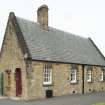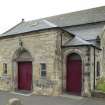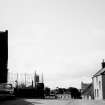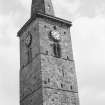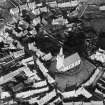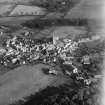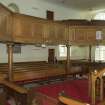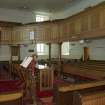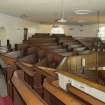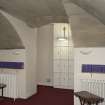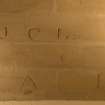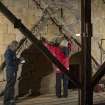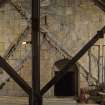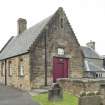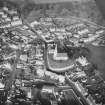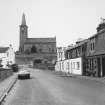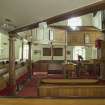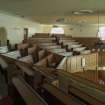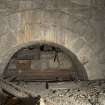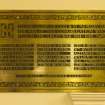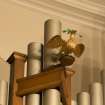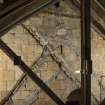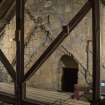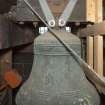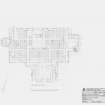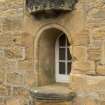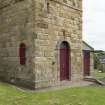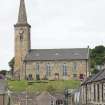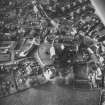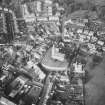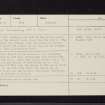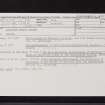Pricing Change
New pricing for orders of material from this site will come into place shortly. Charges for supply of digital images, digitisation on demand, prints and licensing will be altered.
Upcoming Maintenance
Please be advised that this website will undergo scheduled maintenance on the following dates:
Thursday, 9 January: 11:00 AM - 3:00 PM
Thursday, 23 January: 11:00 AM - 3:00 PM
Thursday, 30 January: 11:00 AM - 3:00 PM
During these times, some functionality such as image purchasing may be temporarily unavailable. We apologise for any inconvenience this may cause.
Markinch, St Drostan's Parish Church
Armorial Panel (17th Century), Church (18th Century), Tower (12th Century)
Site Name Markinch, St Drostan's Parish Church
Classification Armorial Panel (17th Century), Church (18th Century), Tower (12th Century)
Alternative Name(s) Parish Kirk Of St Drostan; Church Of St Mordrustus And St John
Canmore ID 29951
Site Number NO20SE 13
NGR NO 29745 01967
Datum OSGB36 - NGR
Permalink http://canmore.org.uk/site/29951
- Council Fife
- Parish Markinch
- Former Region Fife
- Former District Kirkcaldy
- Former County Fife
NO20SE 13 29745 01967
NO20SE 13.01 NO 29748 01955 Churchyard
NO20SE 13.02 NO 29726 01982 Session House
Markinch Church is the successor of a preaching station said to have been established here towards the close of the 6th century. About the middle of the 11th century, it was given to the Culdees of Loch Leven and c.1203, Duncan, Earl of Fife gave the church to the Priory of St Andrews. On the 19th July 1243, the church was rededicated to St John the Baptist, the former dedication being to St Drostan or Modrust.
A H Miller 1895.
(NO 2974 0197) Although the rest of the parish church is modern, the western tower dates from the 12th century. The present spire and cornice, with the course of masonry below the latter are modern and so, too, is the present entrance.
RCAHMS 1933, visited 1927.
As described and in normal use.
Visited by OS (JP) 19 June 1974
NO 2975 0196 Inserted into the wall at the E end of the church is a stone bearing a worn shield with a device including a chevron with a figure at the apex, possibly of the Balfour family.
Built into the outer face of the wall retaining the S edge of the graveyard are two small piscinas, about 0.1m wide, possibly from the church.
C A-Kelly 2000.
NO20SE 13.00 29745 01967
NO20SE 13.01 29748 01955 Churchyard
NO20SE 13.02 29726 01982 Session House
Copied from Architecture Catalogue slip:
ARCHITECT: James Barclay 1806-7 - additions and alterations
Robert Rowand Anderson 1875 - session house
James Gillespie recast 1883
REFERENCE: SRO
Four elevations of a Church with steeple. Unsigned. One dated 1809.
[James Barclay's plan for extension of the church adopted in 1806. His plan for a spire with hewn stone and octagon adopted 1807.]
1798-1809 GD 26/10/118
Ground floor and Gallery plan.
1805 GD 26/10/119
Ground floor plan and loft labelled 'aisle'.
19th Century GD 26/10/119
Field Visit (8 June 1927)
Parish Church.
The parish church stands on an eminence overlooking the village. Although the rest of the building is modern, the western tower, dates from the 12th century. It is square, measuring some 16 feet on each face, and is four storeys in height, the uppermost storey, which is the belfry, having a pair of early windows in each wall. The masonry is of cubical ashlar, built in courses 14 inches in height, and each storey is defined by a string-course bearing a reticulated enrichment. The present spire and cornice, with the course of masonry below the latter, are modern and so, too, is the present entrance, the tower having originally opened into the church by an archway. Within the north-west angle is a newel-stair which ascends from the ground to the upper floors.
ARMORIAL PANEL.- In the north wall of the church is an interesting armorial panel of the 17th century. The helm, resting on an earl's coronet, is mantled and wreathed; the crest is missing. The shield is parted per pale: dexter, Quarterly, 1st and 4th, a thistle ensigned with an imperial crown; 2nd and 3rd, on a bend three buckles, all for Leslie, Earl of Leven. The sinister side is quartered, each quarter is charged with a lion rampant (for Mowbray)*and over all is a label of three points, the whole probably for Margaret Howard, sister of the Earl of Carlisle, who married Alexander, 2nd Earl of Level in 1656. The dexter supporter is a man in armour holding a banner, and the sinister one a crane with a label of three points at the neck. On a label below is the motto, PRO REGE ET PATRIA.
FOLIACEOUS CAPITAL AND CANOPY.- In the front of the session-house are inserted a 13th century foliaceous capital and a niche canopy of later date.
RCAHMS 1933, visited 8 June 1927.
*The Howards, Earls of Carlisle, bear the Mowbray lion rampant in one of their quarters.
Photographic Survey (26 June 2013)
The exterior of St Drostan's was recorded as part of the on-going programmme of survey work that RCAHMS Threatened Building Survey have undertaken at the site.
Project (1 January 2014 - 30 October 2014)
NO 29736 01965 (NO20SE 13) A programme of work undertaken, 1 January – 30 October 2014, formed year three of a four year project which aims to measure, record and interprete all traces of existing and former church buildings on the site.
Years one and two were confined to manuscript research, photography and measurement of the existing building and the surrounding graveyard. This included a resistivity survey, which confirmed the presence of an elliptical bank and ditch feature surrounding the church and possibly predating it. The tower and part of the W nave wall of the Romanesque style building remain in reasonable condition, and show the exceptionally high quality of design and construction. The building was described as a ‘moustier’ or minster by a chronicler of King Edward I when he passed down the old pilgrim way from St Andrews to Dunfermline in 1296. It had by then passed from the control of the MacDuffs to the Priory of St Andrews.
A ground penetrating radar survey under the existing church floor confirmed the outline of a nave and chancel with a substantial anomaly buried beneath the area where it is assumed the chancel arch was located. The measured footprint of the foundation trench matched external observations of remaining 12th-century corner features at the E and W ends of the existing building. A good cross section of the 12th-century nave and subsequent alterations was obtained from raggle lines on the E side of the tower and from still visible thackstone inserts on the tower itself. On the basis of this evidence, plans, cross sections and 3D models of the church and tower have been drawn showing how the building developed from the 12th century onward. These have been considerably assisted by a concurrent RCAHMS survey of the building employing additional and laser based surveying techniques. Detailed results for years one and two have been written up in a progress report.
In year three we took the opportunity afforded by repair work to the tower to investigate 12th-century features hidden beneath 19/20th-century plaster and a rotting timber ceiling. In the process we have uncovered a previously hidden blocked doorway to the spiral stair, a large double voussoir arch between the tower and nave, and what we interpret to be socket holes for the tread wheel used to raise blocks during construction. The plaster removal has also enabled us to secure a full set of masons’ or banker marks from all levels of the tower. Panel removal within the church gallery has revealed a ‘cross pattée’ inscribed on the topmost voussoir of the arch facing into the nave. Otherwise the arch voussoirs appear to be unadorned and unstepped. The tower arch measures 3.95m high from the floor of the nave to the soffit and is 2.01m wide and >1m in depth. Any decoration that the arch imposts might have had on the W side was found to have been removed during previous renovations, but a clear profile was obtained from marks on the S wall. The E side of the arch remains covered by modern plaster work. Within the tower post-12th-century dowels from wooden dado panelling have also been uncovered along with red staining applied directly to the stone after the panels had been removed. Plaster samples have been taken for analysis if funds permit. Loose finds from the NE part of the graveyard adjacent to the church included an arch hood-moulding with a chip-carved saltire motif. This matches a set of three recycled blocks already observed embedded in the 17/18th-century S wall.
The diameter is calculated to be c7m, slightly less than the estimated width of the 12th-century nave. These are now being interpreted as part of a substantial chancel arch. What appear to be recycled plain voussoirs have been identified embedded in the S wall. These may have underpinned the hood-moulding with the arch embedded in the nave walls in a fashion similar to the tower arch. It may have been related to an engaged foliate capital that was recycled in the fabric of the nearby Session House in the 1870s, but is now much worn. Dating of the building is proving to be difficult and the most recent report examines the possibility of an early 12th-century date alongside the currently accepted mid-12th-century date.
Mortar samples with both charcoal and limestone lumps have been taken from inside the 12th-century wall. It is hoped to excavate close to the walls in year three and to focus desk research on comparison with similar buildings in the northern part of the British Isles.
One of the key finds to date is a chip-carved hood-moulding of an arch with a double row of saltires and quirked beading, which was found in a formerly fenced off part of the graveyard. The design was common in late 11th- and early 12th-century buildings throughout Europe. It can also be interpreted as a row of intersecting lozenges and crosses. The find location was once the fenced-off burial plot of the church’s principal heritors, the Balfour family. It was found adjacent to the church near the NE wall, facing in to the wall. The stone matches three others embedded in the S wall, which had been reused when the church was rebuilt in the 17th or 18th centuries. Although finely carved on the face, it is roughly hewn on the upper and lower surfaces and has a peg hole. A template of the design and curvature was made and measured to be c7m in diameter, slightly less than the estimated width of the nave. It is currently being interpreted as a segment of the chancel arch.
Archive: RCAHMS (intended). Reports: Hunter Archaeological Trust
Funder: Hunter Archaeological and Historical Trust, Heritage Lottery Fund and Fife Council
Bruce Manson, Neil Sutherland and Maureen Brand – Markinch Heritage Group (Source: DES)
Resistivity (1 January 2014 - 30 October 2014)
NO 29736 01965 (NO20SE 13) Resistivity survey.
Archive: RCAHMS (intended). Reports: Hunter Archaeological Trust
Funder: Hunter Archaeological and Historical Trust, Heritage Lottery Fund and Fife Council
Bruce Manson, Neil Sutherland and Maureen Brand – Markinch Heritage Group (Source: DES)
Ground Penetrating Radar (1 January 2014 - 30 October 2014)
NO 29736 01965 (NO20SE 13) Ground penetrating radar survey.
Archive: RCAHMS (intended). Reports: Hunter Archaeological Trust
Funder: Hunter Archaeological and Historical Trust, Heritage Lottery Fund and Fife Council
Bruce Manson, Neil Sutherland and Maureen Brand – Markinch Heritage Group (Source: DES)
Standing Building Recording (1 January 2015 - 15 October 2015)
NO 29000 01000 (Canmore ID: 29951) A programme of work undertaken, 1 Jan – 15 October 2015, marked the final year of a four year project (DES 2014, 87–88). During 2015 the focus has been upon comparison of Markinch Church with other 12th-century buildings in the N of England and E Scotland.
During the summer, a detailed survey of the stonemasons’ marks was undertaken on behalf of Markinch Heritage Group by Moira Greig. There are almost 900 of these, mostly well preserved except where rainwater penetration has led to some spalling. They occur on the internal coursing of the tower and on the remaining internal face of the nave adjacent to the tower accessible through an upper doorway. Most are simple three or four stroke marks especially on the lower courses but some are more elaborate with one that appears, so far, to be unique.
A detailed comparison of the marks with those found at Leuchars and Dalmeny has been carried out. There were over 30 types of mark recorded at Markinch but only a few were common to all 3 buildings. The overlap of marks between Dalmeny and Leuchars is significantly greater than between either of these and Markinch. By combining diagonal tooling with the marks themselves it was possible to establish the identity of one individual mason whose final dressing stroke almost invariably corresponded with the first stroke of his mark. This will be important in ongoing work to compare other 12th-century buildings in N Britain, as it may be possible to pick up this unique ‘fingerprint’ stone in other buildings. No such direct link has yet been found at either Leuchars or Dalmeny. An example of this mason’s mark appears on the same block as what appears to be an instruction as to how half-bonded construction should be carried out with the vertical mortared joint at the mid point of the stones above and below. This technique may have been sufficiently unusual to warrant a specific graphic demonstration permanently on display to the team of masons. Other grafitti appear to show a counterweighted T-shaped crane and some roof trusses. Finds during the year included pieces of mudstone slabbing that may have been used as roofing material. No further progress was made on uncovering the tower arch on the nave side although the removal of a wooden panel revealed a cross pattée on the keystone.
Archive: Markinch Heritage Group
Funder: Heritage Lottery Fund
Bruce Manson – Markinch Heritage Group
(Source: DES, Volume 16)
Standing Building Recording (April 2018 - October 2018)
NO 29745 01967 The western side of a large arch was uncovered during renovation work on the 12th-century church tower in 2014 (DES 2014, 87 – 88, 2015, 82 – 83). Survey work undertaken, April – October 2018, concentrated upon the nave side (E face) of the arch following a check of the timbers underpinning the balcony. The existing wall coverings within the church were carefully removed, analysed and retained for future study. This revealed the upper third of the arch that once faced into the nave, and it is now possible to make out the curve of a mutilated hood-moulding or decorative frieze sitting on top of the double voussoir arch. When originally sculpted the frieze would have projected out from the wall but no trace of decorative moulding was found, only a roughly chiselled stone surface. The voussoirs below are relatively intact although damaged by dowel and joist holes. Both lower orders of the arch are flush with the gable wall on either side of the arch and it is now clear that the jambs and the arch itself are square in section, something which is highly unusual in a Norman-style arch where the lower set of voussoirs is usually set back from the upper.
It is not yet clear whether the removal of any decorative moulding above the arch was the result of post-Reformation iconoclasm or later church refurbishment, but similar destruction was observed inside the tower at impost level without any apparent structural need. Dowel peg holes, assumed to be from the 1807 and the 1885 refurbishments, pierced the plaster adhering to the 12th-century ashlar and so it is assumed that the plaster is pre-19th century. No trace of a 12th-century wall covering was found and careful inspection of plaster samples revealed no trace of any painting or fresco work. The damaged frieze under the plaster was found to be covered with chisel marks that appeared, when uncovered, to have been freshly made, and so the conclusion drawn is that the damage was done prior to the 19th century and shortly before the application of the plaster. Session records point to the use of large quantities of lime in the 1680s and to major refurbishment in the 1780s but records are non-existent for the immediate post-Reformation period. It is hoped in future to locate undamaged moulding behind the 19th-century timber balcony or reused fragments elsewhere in the building.
Voussoirs have been used in pairs spanning the full depth of the arch (1.07m). The face of the keystone of the arch with the footed cross (croix pattée) was fully uncovered for the first time along with other voussoir blocks and a further set of masons’ marks adding to the 800 so far identified. Of the 32 different masons (or teams) that appear to have worked on the tower, only three so far have left their mark on the voussoir facings of the arch. About half were unmarked on the visible face, suggesting that marks may have been cut on a hidden face, or else certain members of the workforce were paid on a non-piecework basis. The height of the arch, including the hood-moulding, measures 5.17m (4.31m at soffit level) with a corresponding estimated overall width of 3.75m (2.01m between jambs).
At ground level beneath the balcony the temporary removal of a small section of wooden panelling within the former nave has given internal access to the NW corner of the 12th-century building. Measurements have given an estimated N wall thickness of 0.84m. A large timber dowel found embedded within the arch may yield dendrochronological information and several wooden beams from earlier roof timbers and lofts have been reused within the arch blocking.
As regards the overall height of the nave, it is not yet known whether the small doorway above the arch (now opening into the attic space) originally looked down on the nave or gave access to a loft or clerestorey but, either way, the nave would have been impressively high. Edward I’s chronicler referred to the church as a “moustier” or minster in 1296 but the contextual meaning of this is unclear. Its outline appears to be marked on the Gough map based on an original of around 1300.
The overall design of the tower and arch is simple and well-proportioned (reminiscent of Weaverthorpe in Yorkshire). The execution is clearly 12th-century Norman and of a very high standard. The scale and quality of the tower and arch may reflect links with the MacDuff Earls of Fife, as well as proximity to their seat of judgement at Dalginch. A combination of unusual features at Markinch and the lack of surviving decoration makes dating on stylistic grounds difficult, and further historical and/or dendrochronological analysis may be the most fruitful way forward. Date ranges between the 1120s and the 1150s have so far been advanced. However, future work on the arch, concentrating upon the hidden intersection of the hood-moulding and internal string course, may assist.
As battle leaders and senior lawmen, the MacDuffs would have been close to the Scottish royal family, and design influence, as well as manpower, could have come from a geographically wide range of sources. These include possible links with David I, who had estates in Huntingdonshire, and his sister Matilda of Scotland (wife of Henry I), responsible for much ecclesiastical building work at the heart of the Anglo-Norman world. Durham links are also possible.
Archive: St Drostan’s Kirk
Funder: Voluntary contributions and Strathmartine Trust
Bruce Manson – Markinch Heritage Group
(Source: DES Vol 19)
Conservation (April 2022 - October 2022)
NO 29745 01967 During the summer of 2022 the opportunity arose to carry out further investigations into the 12th-century features of St Drostan’s Church in Markinch. A check for dry rot and a repair to a ceiling cornice enabled the team to examine closely the wall surface lost under 19th-century plasterwork. Samples of mortar and plasterwork were retained and the layers removed were photographed at each stage of the process. The work followed earlier discoveries including a 5.17m high western arch with a double set of voussoirs, both orders flush with the wall linking the tower and the nave. A hood moulding over the arch facing into the nave had been chiselled off some time during the post-Reformation period and no sculpted features remain except a croix-pattée style cross and some well-defined banker marks, both left by the stonemasons. Marks include two that have been interpreted as relating to the construction of the tower, which is of a very high architectural quality. A section of chip-carved arch was retrieved from a point in the graveyard about two metres from the likely location of the chancel arch (DES Volume 16, 82–3).
This year (2022) plaster was removed from the lower section of
the upper level doorway linking the first floor of the tower with the nave. It was clear from the wear pattern on the threshold that the door once led along a frequently used corridor to the roof space above the nave (now lost). The upper part of this door is now accessible from inside the loft of the existing building. It features a neatly cut arch facing E towards the nave and a series of bar slots suggesting that it could be effectively locked or barricaded from inside the 12th-century roof space. These features suggest that the door once led to an upper croft or living space above the nave, rather than to a display balcony or clerestory as was once suggested. The height of the doorway is impressive at 2.29m high (plus a further 0.5 metres to the soffit of the arch) and 1.02m wide.
The idea of an upper chamber used as living space accords with the defensive nature of the tower with walls, well in excess of 1m thick, and the likely absence of a door at ground level. The legal and strategic position of Markinch in the 12th century is also relevant. The Earl of Fife or a senior member of his family is likely to have presided over court proceedings at nearby Dalginch and would have required secure accommodation during trials for several days at least. Permanent accommodation for a priest (perhaps a member of the MacDuff family), or even high status pilgrims are also possible uses but much more comparative analysis is required. A better preserved 12th-century example still exists inside Cormac’s Chapel in Ireland, but in England such connecting doors are more commonly a feature of pre-Norman architecture.
The internal decoration of the nave was also investigated. The second piece of plaster removed inside the church this year was from the area around the northern impost of the western arch. The scars, left where the hood moulding and string course had once been, indicate clearly that a decorated frieze, most probably of stars/saltires (étoiles en crèux) once continued along the gable of the nave wall and probably along the wall itself. This internal string course was 0.22m deep and accords exactly with the depth of chip-carved decorative elements reused on the exterior of the 17th-century S wall. The nave therefore had both an interior and an exterior frieze, the latter most likely continuing around the tower with a diamond or lozenge motif. If the internal string-course continued along the N and S walls of the nave then the windows would have been located above it, their high level position again according with the defensive nature of the building.
Other ongoing work was carried out at the chancel end of the building where the only internal features revealed so far include the chip-carved section of hood-moulding, once part of the chancel arch, and a possible large burial feature revealed by ground penetrating radar. Work inside the tower and on the remaining gable of the nave is focussed upon the nave roof structure and covering. Packing between 12th-century ashlar blocks requires further analysis and may point to the original roof covering. The form and accuracy of the original raggle lines and the tower structure itself indicates that the team of masons working in Markinch was of the highest order. This perhaps indicates that the 12th-century Scottish aristocracy had access to craftsmen close to the Anglo-Norman court, certainly through Alexander I and David I and possibly also through their sister Edith (Matilda of Scotland), the wife of Henry I. It should be recalled that the Earls of Fife were responsible traditionally
for enthroning the monarch and were often in a ddition Justiciars
of Scotland, certainly N of the Forth. The scale and quality of the building at Markinch may account for the comment by Edward I’s chronicler who referred to the church as a moustier or minster during the army’s brief visit in 1296.
Archive: St Drostan’s Church Funder: Private individual
Bruce F Manson – Markinch Heritage Group










































































































